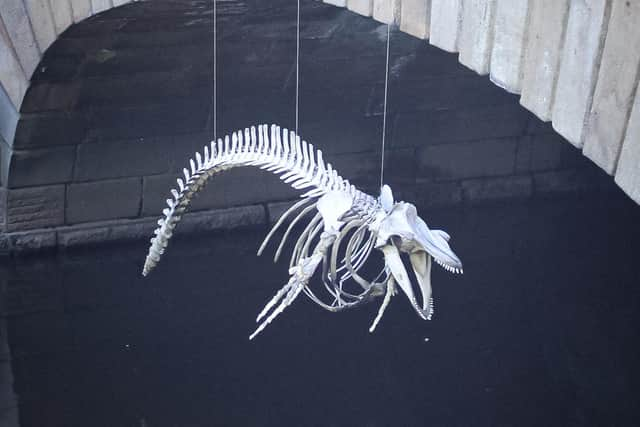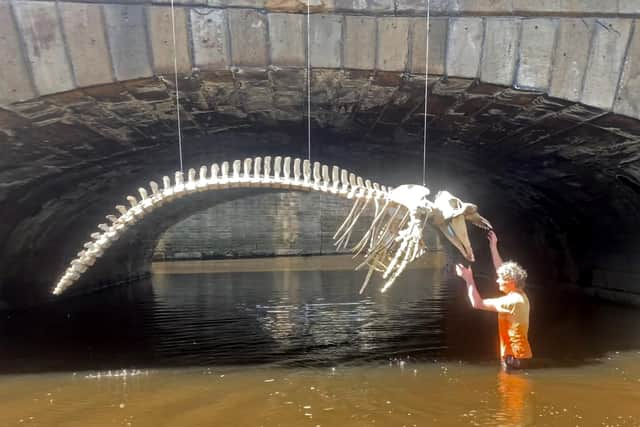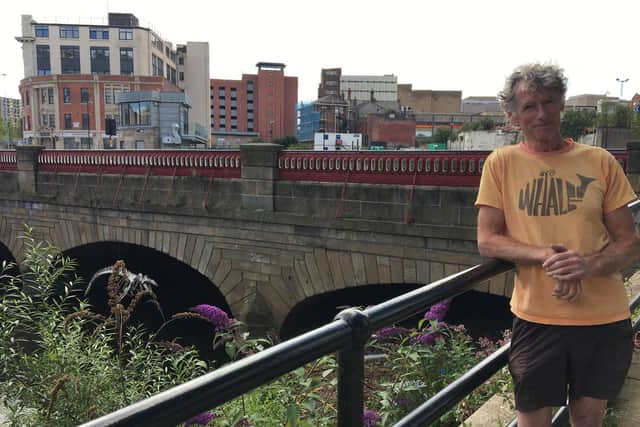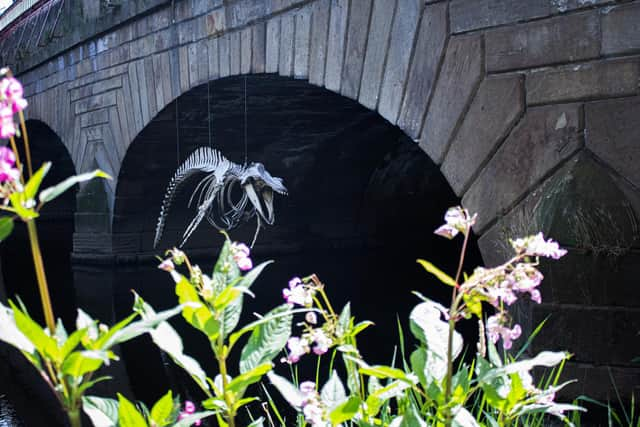This is why a huge whale skeleton was seen hanging from a Sheffield bridge
and live on Freeview channel 276
The bones were there for just a day, puzzling passers-by after mysteriously appearing over the River Don.
And now the man behind it all has come forward to explain everything.
Advertisement
Hide AdAdvertisement
Hide AdDave Clay, a biology lecturer from Crookes, found the carcass of a long-finned pilot whale buried in the sand on a beach on the island of South Uist in Scotland two years ago, and later painstakingly rebuilt its skeleton from head to tail.


“I assembled the skeleton in my garden during lockdown,” said Dave.
“I wanted to do a temporary installation over the Don, just as an artwork that would make passers-by on the Five Weirs Walk pause and wonder what it was there for and why.”
The answer, Dave said, is ‘whatever people want it to be’.
“I think that during this Covid-19 crisis all sorts of thoughts have been going through people’s minds. This installation has no political agenda or particular meaning but hopefully made people pause and reflect, and hopefully find it wonderful.
Advertisement
Hide AdAdvertisement
Hide Ad

“No damage or alterations were inflicted to the bridge or left there at the end of the day."
The whale bones were kept in place only on Sunday, July 19.
Dave, who has mainly worked at The Sheffield College, said he had a ‘passion for evolution’.


“If you look at the front limb of a whale you can see that it is a 'hand', the basic pentadactyl structure of mammalian limbs,” he said.
“Some, during the course of evolution, have reduced the number of digits from the ancestral five to, for example in the case of a cow and other ungulates, just two digits. Whales and dolphins evolved from a land-dwelling ungulate that walked on two toes – during their evolution into aquatic forms they regained their ancestral five digits on the forelimb and completely lost their rear limbs apart from two rudimentary pelvic bones.
Advertisement
Hide AdAdvertisement
Hide Ad“Biology is fascinating and I dislike the way that it is often dumbed-down in many features on natural history. I think most people would marvel at the fact that a cow is more closely related to a whale than to a horse.”
Dave said there were no future plans for the skeleton yet, but that he might offer it to Sheffield’s Weston Park Museum as an exhibit.

